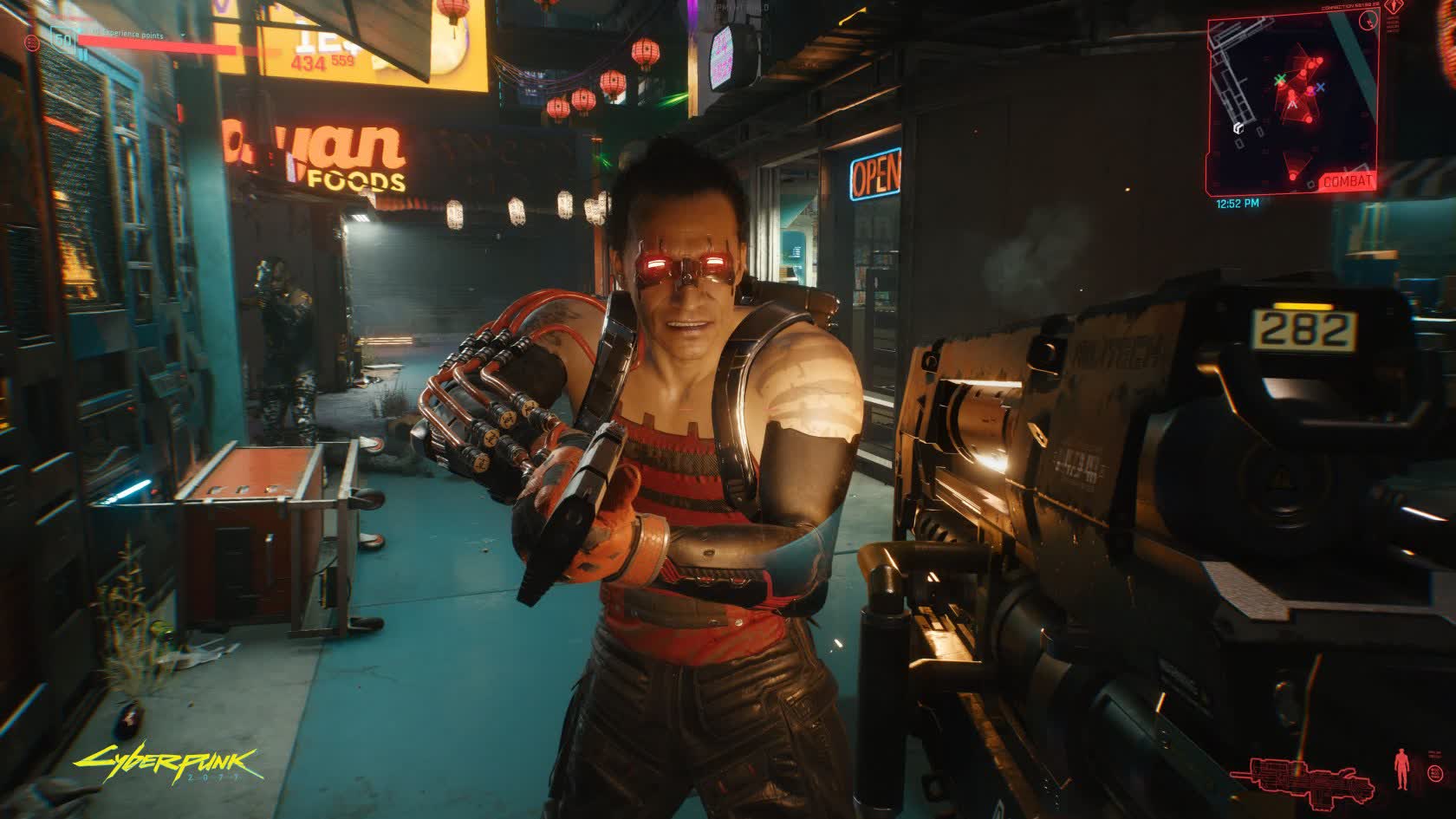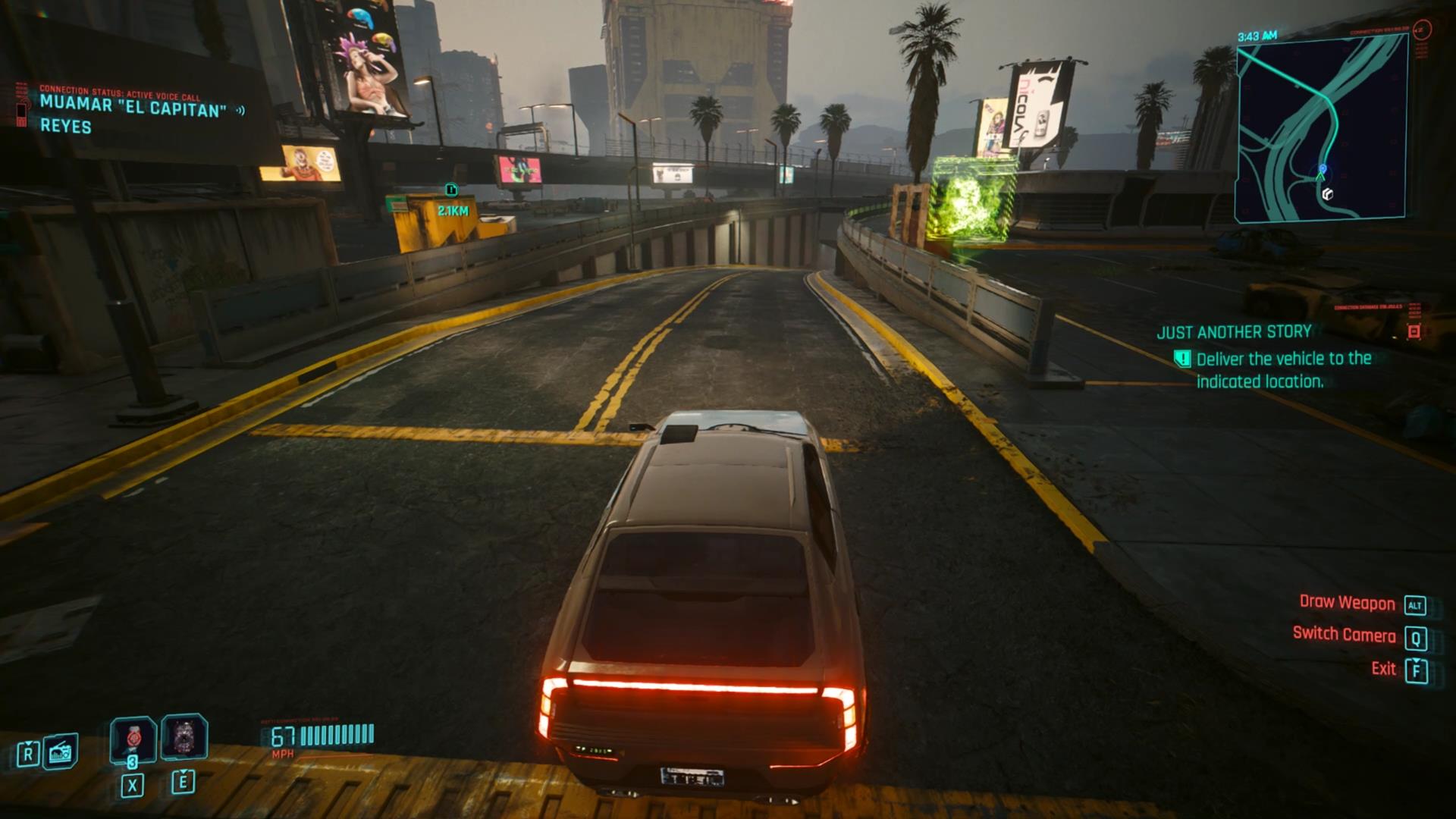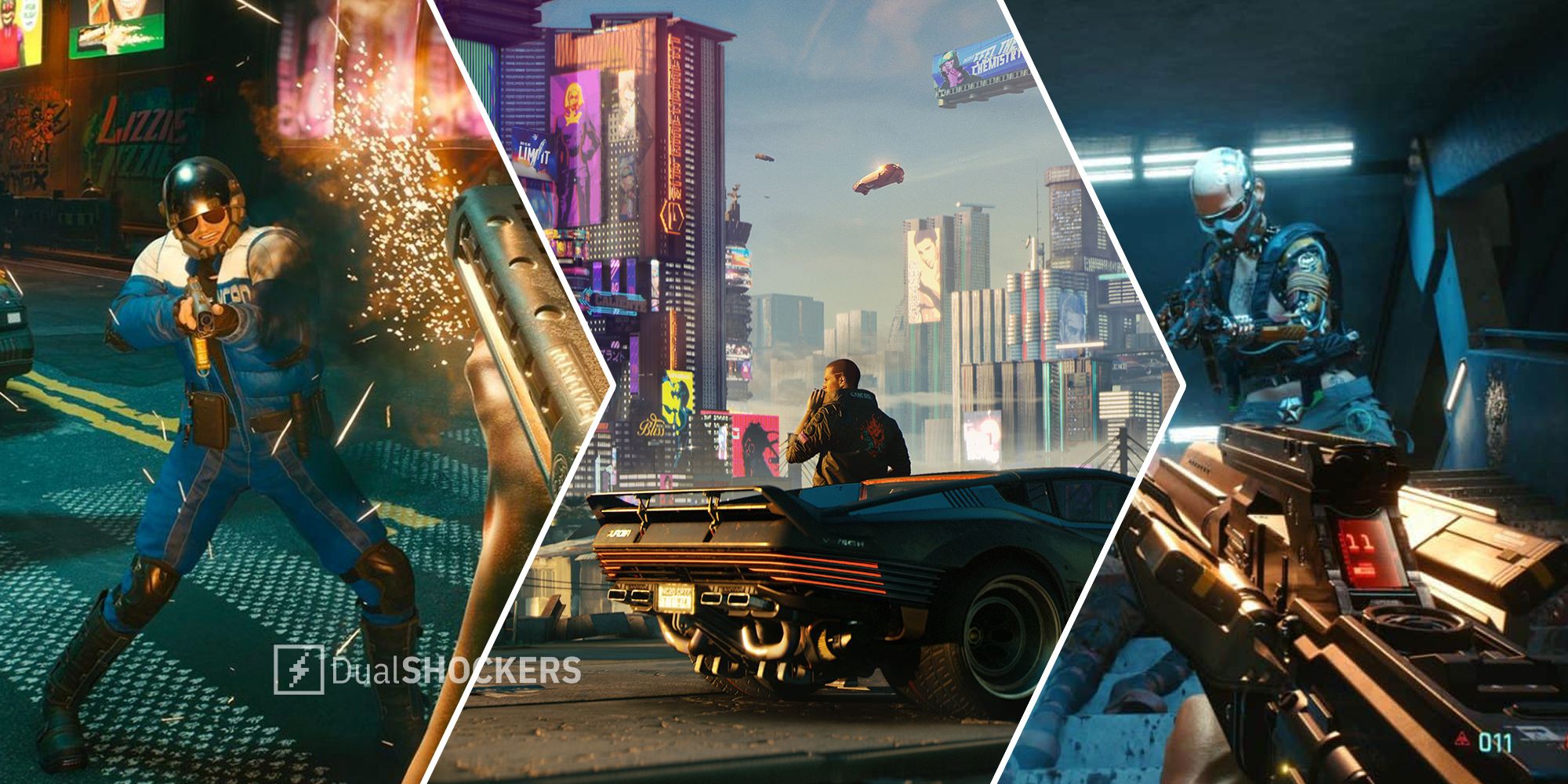
Cyberpunk 2077’s vision of a dystopian night city clearly has a lot to explore, but just like its shining towers and skyscrapers, CD Projekt Red’s new sci-fi adventure has deep roots.
With over 30 years of lore, there’s a lot to catch up on whether you’re a total newbie to the Cyberpunk universe or a tabletop veteran looking for a refresher. Here’s a (relatively) brief history of the Cyberpunk world before 2077:
1989 – 2012: The Dawn of the Dark Future

Though 2077 is set 50 years in the future, the Cyberpunk world actually begins in the late 1980s. The world’s timeline is different from ours.
As we all know, after the end of the Reagan administration, the US government falls victim to a secret coup by the directors of the FBI, CIA, NSA and DEA, and the world falls apart. Colloquially known as the “Gang of Four,” this shadow government was hell-bent on the cause of “profits over people,” ultimately leading to the total collapse of the United States as we know it.
The soon-to-be former superpower would almost immediately find itself embroiled in the supposed “war on drugs and communism” in South America, which turned out to be little more than a thinly veiled scramble for lithium reserves in Chile and Bolivia. What the gang doesn’t tell its citizens is that they developed and spread a plague to wipe out the cartels’ cocaine and opium production around the world, something the European giants who secretly sponsor the cartels weren’t too happy about. This would lead to more and more conflicts across the Western Hemisphere, culminating in the detonation of a suitcase nuclear bomb by a Colombian cartel in Manhattan in 1993.
The following year, the world would experience widespread economic collapse as it was revealed that the United States had been manipulating global markets to launder money made from illegal arms sales. By the late 1990s, the country was in ruins, hit by a combination of war and economic depression, as well as several epidemics and natural disasters, including a magnitude 10.5 earthquake that submerged more than 30% of Los Angeles into the Pacific Ocean. One in four people was homeless and most cities were deserted, leading to the emergence of mobile communities known as nomads and augmented booster gangs. The Constitution was suspended and martial law was declared across the country, while several states, such as California and Texas, seceded and became “free states.”
Of course, no one does a better job of cleaning up after a global disaster than multinational corporations. Governments large and small were on the brink of collapse, and many had no one to turn to for help except giant corporations willing to help them in exchange for more power and influence. In the early 2000s, corporations controlled the world’s governments and resources to the same extent (if not more) than the developed world. Their most serious opponents were the energy company Petrochem and its Soviet counterpart SovOil, the biotech company Biotechnica, the weapons manufacturer Militech, and of course the grandfatherly giant Arasaka, which “does everything except mostly private military contracts.” And the little fish in the sea.
That’s not to say the turn of the millennium was all bad. The Central African nations have banded together to develop a space program that has been extremely successful, with by far the most spaceports (albeit after some violent conflicts with other space stations and lunar colonies) and the strongest control over their region in Earth’s orbit. A new, more efficient renewable fuel source called CHOOH² is being developed (this is not a chemical formula, it’s just something Biotechnica’s marketing team thought sounded good) that will replace gasoline within a few years. Tragically, the surprising number of injured veterans returning to the US from the South American wars of the early 1990s pushed technological innovation in prosthetics and biomechanical integration to a new level, leading to the development of cyberware used in medical settings that became widespread in the 2010s and 20s.

Of course, with cyberware came cyberwarfare and cybercrime, as well as many other morally questionable uses of this revolutionary technology. In a world where kibble has become a common food, it is no wonder that so many people have lived their lives on the fringes of society, whether they feed themselves or not, or whatever vice they have chosen. Soon fringe living became the mainstream, the norm that many fall into. These cyber-crazy troublemakers, whether street urchins or corporate wannabes, eventually became known as edgerunners, or more commonly, cyberpunks.
Through it all, Night City proved to be one of the few cities to survive the subsequent collapse and chaos, but it had its share of problems. Originally founded in 1994 as Coronado City, it was later renamed following the assassination of architect Richard Knight in a power struggle between megacorporations or the Mafia (it’s still unclear which), it wasn’t until the early 2010s that the city experienced true stability. After years of open warfare on the streets between corporate security forces and the Mafia, the organized crime syndicates finally gave up. It remained a dangerous place, and some neighborhoods, such as the developing Pacifica, never fully recovered, but it began to feel more like a city rather than a war zone… at least for a few years.
2013: The Soulkiller

In 2013, rock star and cyberpunk Johnny Silverhand (a military veteran who replaced his missing arm with a chrome-plated one from the Central American war in the 90s) was leaving a gig with his girlfriend Alto when they were ambushed by a hit squad. Leaving Johnny for dead, they kidnap Alto and drag him to their Arasaka headquarters. As it turns out, this megacorporation isn’t particularly happy about being one of the largest (if not the largest) multinational corporations of all time. Its founder Saburo Arasaka and his son and CEO, Kay, are, in short, looking to take over the world. And what Johnny didn’t know about his new flame was that Alto was a truly extraordinary netrunner, or hacker, who created a legendary piece of malware called Soulkiller.
Originally designed to transfer human consciousness into clone bodies, the program has been used as a weapon not only to burn out the brains of its targets, but also to digitally imprison and torture their souls. It was one of the most vile and evil innovations of the modern era, and also the key to immortality – though Arasaka kidnapped Aruto to focus on the former and not the latter.
Meanwhile, Silver Hand survives, convenes a rescue team, and organizes an impromptu show outside Arasaka, inciting the assembled crowd to riot to get inside. At the same time, Aruto jumps into the Soul Killer to reprogram himself and escape, but the two plans collide in the worst way possible.
Johnny and his crew blast their way to Arasaka, accidentally cutting off and destroying Aruto’s escape to the real world. Manipulating the command console, they cut the bridge back inside the human’s body. Believing her dead, they flee, leaving a disembodied Aruto trapped in cyberspace.
2021: The Fourth Corporate War

As the name suggests, before the 2020s there had already been three wars between competing megacorporations – when corporations run with the GDP and military power of small countries, battles for market dominance inevitably get ugly. But these were all just minor squabbles compared to the Fourth Corporate War.
It started out quite innocently, as a hostile takeover by a rival shipping company in 2021 – at least as innocent as including an assassination as part of corporate espionage – but as the situation escalated, it became clear that both sides, Arasaka and Militech, the two biggest PMCs, had been looking for an excuse to fight each other for years.
It wasn’t long before the war ravaged the Earth, pushing most nations to their limits. Nearly all trans-Earth transport was halted, orbital colonies declared independence to escape the conflict – by dropping several tons of rocks from orbit onto Earth – and the entire network was wiped out as Arasaka retaliated with the assassination of a famous hacker. A virus released by Bartmoss infected nearly 80% of the network, damaging both corporations and government agencies.
2023: The Fall of Night City

Night City was ground zero for the end of the war. As a free city in the Free State, both Militech and Arasaka were based in the city, and with no national government to hold them accountable, the city was a hotbed of ongoing fighting between the two. Things finally came to a head in August 2023, when a small nuclear bomb exploded at Arasaka’s headquarters in the city center.
The details of what really happened in the hours leading up to the so-called Night City Holocaust remain unclear. And “in the dark” means that the events of the tabletop adventure could be reworked afterwards in 2077… but we’re going to assume that these books are mostly true, especially since the original creators partnered with CDPR. And just published a new book. There was no official decision on who detonated the bomb. The two main theories are that MiliTech was too bloodthirsty, or that Arasaka nuked their own headquarters to protect their trade secrets. But as you might imagine, the real story is not so simple.
After the Night City bombing, the US government did not officially nationalize Militech, although the authorities actually collaborated with the PMC shortly before it. Apparently, Arasaka managed to block Alto’s digital consciousness and used it to build a new version of the Soulkiller, which neither Militech nor Uncle Sam could really escape. Unified Command put together a black ops team led by legendary mercenary Morgan Blackhand, which consisted of another mercenary named Rogue, a journalist named Thompson (who still writes for the Night City Inquirer in 2077), a netrunner codenamed Spider, and — you guessed it — Johnny Silverhand, who was hell-bent on getting revenge on Ort and attempting a new rescue mission. The objective was very simple: infiltrate, rescue Alto, eliminate the Soul Killers, and destroy Arasaka’s corporate database by dropping a tactical nuke on the basement.
Of course, being Cyberpunk, things don’t go as planned. They arrive at the Soulkiller lab relatively unscathed, but everything takes a turn for the worse when Arasaka’s favorite cybergoon, Adam Smasher, shows up and injects Johnny Silverhand with a large amount of lead. Spider attempts to download his brain using some sort of data slingshot she got from Aruto – it’s supposed to be the biochip that V will eventually steal in 2077 – but she’s unable to secure his consciousness, as the equipment is destroyed in the gunfight. The team manages to burn out the Soulkillers, but Aruto is unable to escape being trapped (again) in the collapsed data network.
When the bomb goes off, it’s unclear who else is still alive besides Thompson, Rogue, and Spider, but we do get a good look at Adam Smasher, alive and well in 2077, but it’s also alleged that Arasaka Kei (Saburo’s favorite son and co.) was killed as well. Also, it is still unknown who actually was responsible for the bomb detonating before it reached the underground.
Although the explosion itself was not large enough to destroy the city, Arasaka Towers and much of the city center were destroyed, thousands were killed, and the bay on which it was all built flooded much of the city center. In the aftermath, the Militech-backed US government intervened with forces virtually incomparable to Arasaka’s, and the Japanese government quickly convinced the PMC to cease operations. Eventually, Arasaka was effectively banned from any business in North America due to threats of nuclear retaliation against its Tokyo headquarters.
2024 – 2070: Reconstruction and Reunification

Similar to iconic periods of the 20th century such as the “Summer of Love” and the “Great Depression”, the years immediately following the Fourth Corporate War are known as the “Red Flags”. A mixture of debris and radioactive fallout circulated through the atmosphere, turning the sky an intense red color and not completely dissipating for nearly a decade.
The Fourth Corporate War has destroyed nearly all the cultural norms that have been gaining momentum since the 1980s. The global balance of power is shifting away from corporations and back to national governments, and laws are being passed that require at least some degree of accountability for corporate misdeeds. Ultimately, this only means that corporations will have to be more careful about their illegal activities, but it will loosen the iron grip that many corporations once had over most of the world’s population.
With much of the industrial and commercial infrastructure destroyed or crippled, the world went through a sort of technological recession. While countries focused on rebuilding, cyberware production and development did not reach 2020 levels for about 30 years. This could have happened sooner if the information-sharing internet still existed, but since Bartmoss’s DataKrash, it has become overloaded with rogue AI and self-aware viruses. It is effectively treated as a digital wilderness. As networks were eventually rebuilt across a series of regional, national, and/or corporate hubs, they were no longer as widespread as they were before, but cybersecurity agency Netwatch developed the Black Wall, a digital barrier that cut off remnants of the old network from the new.
In the midst of all this, Night City, along with several other cities abandoned during or after collapse, was rebuilding thanks in large part to nomadic supply chains and corporate philanthropy (helping with the rebuilding effort is the best way for the old giants to regain the trust they lost in the war). The “New United States of America” - actually consisting of only the East Coast and a few inland states, with most of the central and western territories administered by the Washington D.C. government. It maintained its independence and did not provide any meaningful aid, instead trying to outwit the free states hesitant to rejoin the Union with offers of aid.

These “unification” efforts by the NUSA government eventually escalated in 2069 when the remnants of the former superpower declared war on the independent territories. With Southern California rejoining the US and the northern free states refusing, Night City found itself caught between the battle lines. However, it was not drawn into the fighting thanks to the help of an unexpected ally: Arasaka.
The security titan secretly supported many of the free state resistance fighters, but when his private army became directly involved, he immediately withdrew his government – knowing that it could not afford a major conflict or risk a new global crisis. In 2070, a treaty was signed between the remaining Free States and NUSA, declaring Night City an “International Free City”, exempting it from the laws of the new US government and the Free State of Northern California. Big corporations from around the world rejoiced, most notably Arasaka, which wasted no time in building its new American headquarters directly on the site of the old one.
Monitors may have switched from CRT to LCD, but Night City is once again a den of old-fashioned corporate greed and violent crime. Of course, there are still plenty of unanswered questions, like who exactly took over Johnny’s digital consciousness when the tower collapsed, what actually happened to Arasaka’s area-blockade nukes, since they were definitely there, or at least whether Kibble had them. Have any new flavors been released in the last 50 years?

Leave a Reply